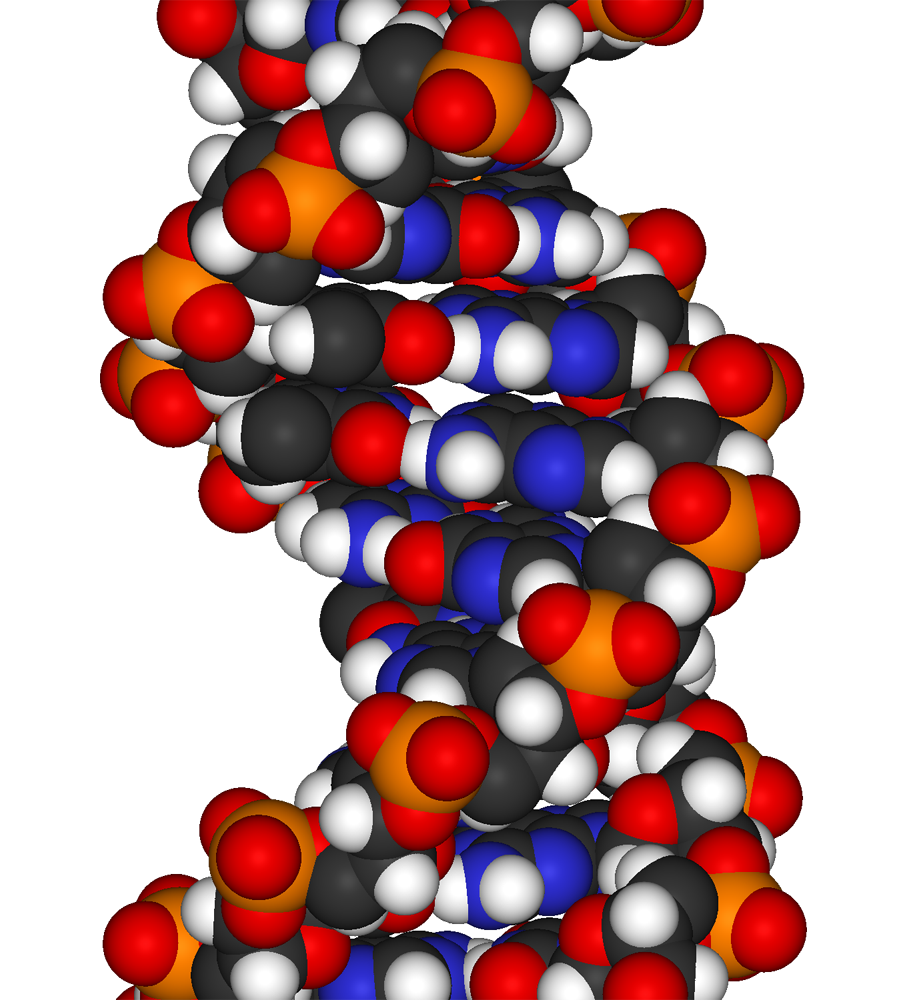©Copyright 2018 GEOSCIENCE RESEARCH INSTITUTE
11060 Campus Street • Loma Linda, California 92350 • 909-558-4548


A close-up of a DNA molecular model.
Bernardi, G. 2019. The genomic code: A pervasive encoding/molding of chromatin structures and a solution of the “non-coding DNA” mystery. BioEssays 2019, 41:1900.106. DIO:10.1002/bies.201900106
Summary. Most of the DNA of vertebrates does not code for proteins, and its function has been mysterious. This non-coding DNA has been called “junk DNA” or “selfish DNA,” based on the fact it had no known function, yet was preserved in the genome. DNA studies reveal that the non-coding DNA has a lower proportion of guanine and cytosine (GC) than DNA that codes for proteins. Further study indicated that regions of high GC content seemed to be interspersed with regions of low GC content, forming alternating regions of similar high or low GC content known as isochores. High-GC isochores correspond to chromosomal regions with high concentrations of protein-coding genes, located near the center of the nucleus in “resting” cells. In contrast, low-GC isochores correspond to regions with low frequencies of protein-coding genes, and are located at the periphery of the nucleus. The non-coding, GC-poor regions form attachment points separated by loops of gene-rich DNA. This exposes the gene-rich regions and enables the DNA information to be accessed. If gene-rich regions were used as attachment points, the information in the DNA would not be readily accessible and efficiency of protein production would be greatly diminished. Non-protein-coding DNA, rather than being useless “junk” actually forms a kind of “genomic code” that regulates the structure of the chromosome.
Comment. The efficiency of the function of gene-poor regions as attachment points and gene-rich regions as exposed loops impresses one as an example of intelligence in design. The term “junk DNA” has been abandoned by many scientists, in large part due to the ENCODE project.[1] It turns out that a function can be demonstrated for nearly all the DNA. It is instructive to consider why scientists thought that DNA with no known function actually had no function. The answer may be that we tend to fill in the gaps in our understanding with what we expect based on our worldview, and then accept that speculation as fact. In the case of “junk DNA,” scientists who reject the idea of creation based their conclusions about “junk DNA” on their worldview that denies intelligence in the design of the cell. In this view, it would be expected that a random, unguided process should leave a long trail of molecular evidence in the form of unsuccessful trials – junk DNA. This became dogma despite the lack of evidence, to the point where some scientists still oppose the idea that most non-coding DNA actually has a function.
Creationists need to take note, for two reasons. First, we can easily fall into the same trap, filling the gaps in our knowledge with presuppositions from our worldview. Second, we should be cautious in evaluating claims of fact, whether made by scientists or others. There may be many other “facts” of science that are actually based on philosophical speculations substituting for actual evidence, and it would be prudent to look carefully at the evidence when evaluating truth claims.
[1] E.g., see https://www.encodeproject.org/ , https://www.nature.com/encode/